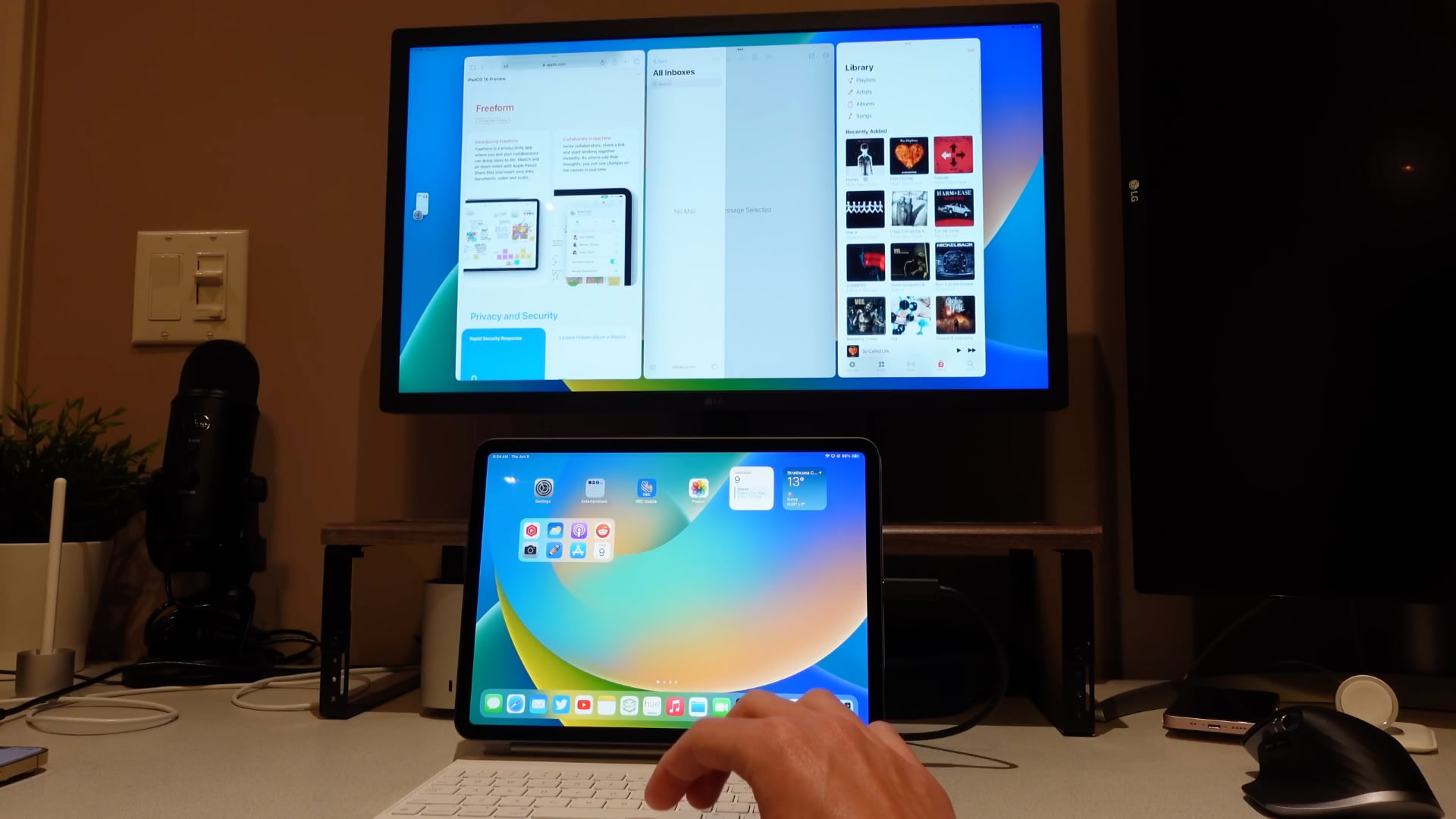In this hands-on video walkthrough, we go hands-on with Stage Manager, Apple’s new multitasking feature in iPadOS 16 and macOS 13 Ventura.
Video: Hands-on with Apple’s Stage Manager multitasking feature on an iPad
Our videographer Michael Billig (@michael_billig) has put together a nine-minute hands-on video to walk you through Stage Manager, which is Apple’s new multitasking feature in iPadOS 16 and macOS Ventura. The video also covers other enhancements in iPadOS 16 that are worth mentioning, such as improvements to the Files app along with an iPad version of Apple’s gorgeous Weather app.
What is Stage Manager? How does it work?

Apple unveiled Stage Manager during its June 6 keynote at the 2022 Worldwide Developers Conference as a new multitasking feature for the iPad and Mac. Stage Manager automatically organizes open apps and windows so you can concentrate on the task at hand whilst still seeing everything at a glance. The window you are working in is displayed prominently in the center, while other open windows appear on the left-hand side so you can quickly and easily switch between tasks.
You can also group windows together when working on a specific task that requires different apps. On the Mac side of things, Stage Manager works in concert with other windowing tools available in macOS, including Mission Control and Spaces, rather than replacing them. Read: Tips for making the most of macOS Launchpad
The Stage Manager controversy
You may have heard that some Apple-focused blogs are angry because Apple hasn’t designed Stage Manager to work on all iPad models supported by iPadOS 16. Instead, Stage Manager requires the latest iPads powered by Apple’s M1 chip: The fifth-generation iPad Air, the fifth-generation 12.9-inch iPad Pro and the third-generation 11-inch iPad Pro. Older iPads won’t get Stage Manager at all, meaning that folks who want to use this feature will need to upgrade their hardware.
Now, Apple has said that Stage Manager requires not only lots of RAM and a speedy CPU, but also fast I/O in virtual memory. To make the experience of switching between running apps in Stage Manager smooth, Apple explained it had limited the feature to the M1 chip or newer due to its handling of virtual memory and fast storage.
Craig Federighi, Apple’s chief of software engineering:
It’s only the M1 iPads that combined the high DRAM capacity with very high capacity, high performance NAND that allows our virtual memory swap to be super fast. Now that we’re letting you have up to four apps on a panel plus another four — up to eight apps to be instantaneously responsive and have plenty of memory, we just don’t have that ability on the other systems.
And this:
When you put all this together, we can’t deliver the full Stage Manager experience on any lesser system. I mean, we would love to make it available everywhere we can. But this is what it requires. This is the experience we’re going to carry into the future. We didn’t want to constrain our design to something lesser, we’re setting the benchmark for the future.
Another argument in Apple’s defense: On top of everything it does to help you multitask better, Stage Manager also supports 4K, 5K and 6K displays at scaled resolutions. But some blogs refuse to take Apple’s explanation at face value and continue to question it, arguing that the iPad Air 5 supports Stage Manager despite lacking fast I/O in virtual memory. Read: How to use macOS Mission Control